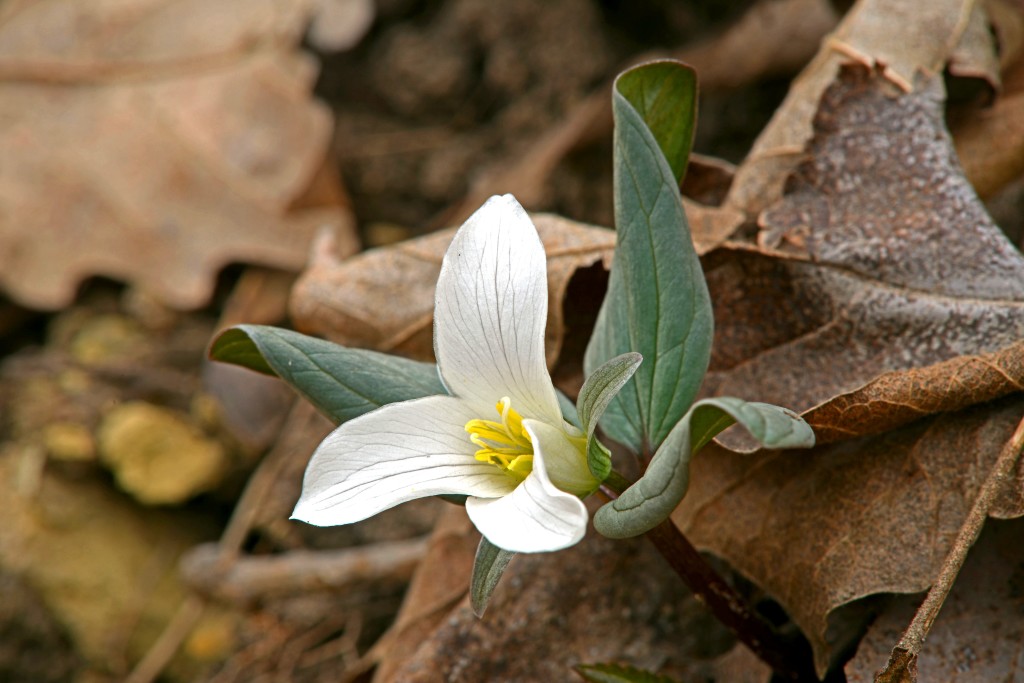Snow Trillium
Spring has officially blossomed! On St. Patrick’s Day, I managed to get out to a special place in the woods where some of the first flowers of spring peek through the leaf litter. It has been a mild winter and the recent warm weather has caused spring to arrive rather quickly.
Along the Illinois River Bluff Trail in Robinson Park, there is a rugged trail that takes you south through a valley and up a north-facing slope. The trail makes a bend and the slope levels out a bit . . . just enough to allow the low-angled sun to reach a small spot on this otherwise shaded hillside. It is here, where the sun hits the earth and warms the soil that the first flowers bloom, and it is here where an observant hiker can find the Snow Trillium (Trillium nivale).
The tiny plant stands only about 3 inches tall on a pinkish stem. At the top of the stem, three leaves come from a common point. At the juncture of the leaves, one bright, white flower reaches out to greet the sun. Trillium, as its name suggests, is devoted to the number three . . . three leaves, three sepals below the flower and three petals on the flower. Even the plant’s internal parts follow a multiple of the rule of three. Six yellow stamens grace the internal tube of the flower.

PHOTO BY MIKE MILLER
This snow trillium is one of the first spring ephemerals to emerge on a north-facing slope in a small pocket of ground warmed by low-angled rays of sun on a trail in Robinson Park.
The trillium will bloom for only a few short days. It is not unusual for this diminutive wildflower to be graced by the last snowfall of the year. Here it earns its first name quite well. Some of the first insects of the season seek out its nectar. Today, a tiny, native bee no bigger than a fruit fly buzzes noisily about the handful of flowers. After blooming, the plant quickly sets seed. The seeds are covered by a waxy coat and are tempting to ants that live in this part of the forest. The ants will carry the seeds away, and dutifully bring them into their underground labyrinth where some of those seeds will start a new generation. By mid to late April, the plant’s short life above ground will be over. Deep below the soil, its roots will lie dormant among the busy forest soil, awaiting the sun to warm this spot again next year.
Such is the wonder of many of our spring ephemeral plants. They grace us one day and disappear the next. However, each individual plant can live for decades, if not centuries. No one really knows just how long an individual wildflower can grace the earth, but in my heart, I do know that some of the ones I look at each spring graced the forest when botanists from the early part of the 20th century gazed at their blossoms. It’s humbling.
There is a lesson to be learned here. Nature blesses us with much beauty and mystery. If you put off seeking out the beauty for too long, you will miss out. It will be another trip for Earth around the sun before we have the opportunity again. And who knows how much ugliness will happen in that time. We better grasp all of the beauty we can when the opportunity presents itself. Get out there and enjoy!

Recent Comments